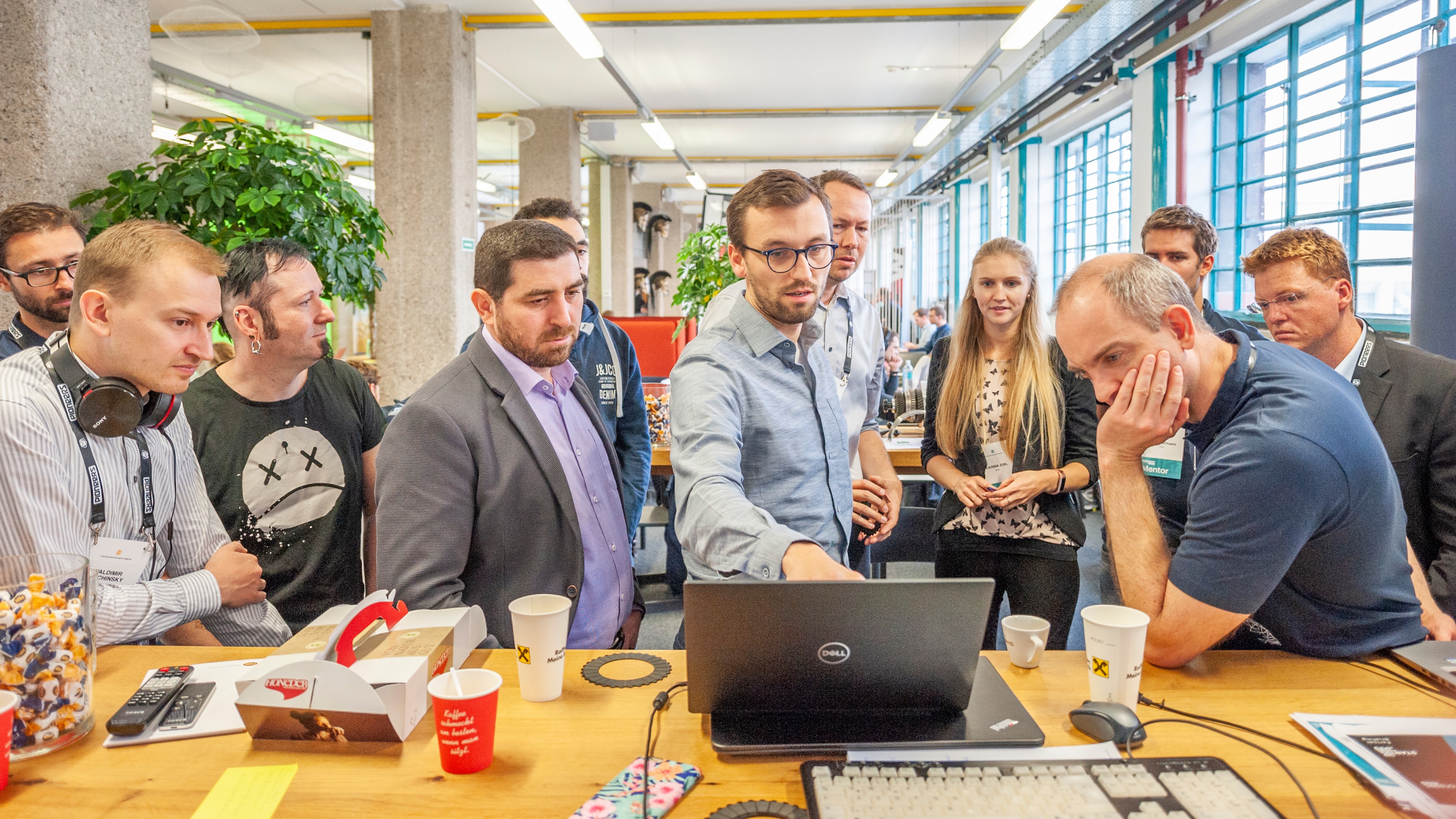
At the third edition of our increasingly popular Industry Hackathon, which took place in Linz last week, we were pleased to welcome Paul Trompisch of the Austrian Industry 4.0 Association onto the stage to deliver a keynote on the final day. As a curtain-raiser to the pitching session in which startups presented their answers to challenges from our four corporate partners, his overview of Industry 4.0 trends was a perfect fit.
Trompisch looked first at where we are in the big-picture cycle of industrial history.
“We’re past the product stage, the smart product stage and the smart connected product phase,” he said. “Most companies are now looking at the fourth phase: product systems. This is where the product is still the main focus but needs advanced functionalities, such as the ability to communicate with customers.”
To get ahead of the competition, however, Trompisch suggested that companies need to cast their gazes even further up the road.
“What’s most interesting now is the fifth phase, that is the shift from products to services. What the end customer wants is fire prevention – they don’t care about the fire truck itself.
“Technology is the foundation for transformation, but what to do with it is also very important. This is where companies lack understanding. They have to rethink their business models. In fact, they have to disrupt their own business models.”
This fifth phase, of course, is not as easily executed as said. The movement starts from within, and it’s sluggish right now, said Trompisch.
“There’s a lack of integration of digital services. Product lifecycle management systems are hardly deployed. It’s the same with manufacturing or prototyping techniques like 3D printing.
“Almost nobody is thinking about human-machine interface either – how to create a safe environment for employees to use this new technology.”
There are valid reasons, of course, why change isn’t coming as fast as his platform, as well as similar initiatives right across Europe, would like. This is especially the case for medium-sized companies.
“When you look at SME’s in particular, the main reason is a lack of money and high investment costs. There’s an unclear Return on Investment (ROI).
“Few companies are using cloud technology. They don’t yet see the benefit and they are scared to give away data. Standards are unclear with so many different platforms and technologies on the market, and they don’t know which ones to trust – so companies are waiting until it’s all consolidated.
“There’s also a big lack of qualified employees with the right skill sets, and its a problem to find those who can guide existing employees. There are big fears of change amongst employees, even with new technology, because they have trouble participating. Many don’t have the right skills and they are afraid of losing their jobs.”
Plenty of excuses, then? Not for Trompisch, who sees one obvious solution to all of it. And in the context of a hackathon, his words on stage at the Tabakfabrik couldn’t have made more sense.
“When it comes to new models like Product As A Service, most companies don’t even have an idea of where they’re going! This is where startups can really give a fresh pair of eyes and fresh input.
“How can companies provide next-level systems? You have to connect with partners outside your sector because of this growing complexity. The more complex a system gets, the harder it is for one company to master it. Partnerships and co-operation become even more of a focus.
“So, try out new co-operations! Don’t be afraid to partner. That’s a major barrier with some of our companies.”
Not so for our hackathon partners sitting in the audience, of course. Among whom were KEBA, old friends who took the leap of faith by taking part our very first Industry Hackathon a year ago. They issued a challenge around the training of a factory robot, eventually deciding on Key Concept’s incredibly simple solution (we’ll be exploring this soon in another article) as their winner.
Key Concept was also named as an overall winner of the Industry Hackathon, walking away with a year’s membership of factory300. Their fellow overall winner was a joint team of two Hungarian startups, REACH Solutions and Maxwhere, who won themselves tickets to Pioneers’19. Their 3D factory floor visualization was selected the as most impressive response to the digital twin challenge issued by TGW Logistics Group.
Our other two partners were Voestalpine and Miba, which issued a Blockchain certification challenge and an image recognition quality control challenge respectively. These categories were in turn won by Croatian startup Katalyo and Vienna-based Craftworks.
“We wanted a solution that fitted our legacy systems the best,” said Ronald Lachmair, Head of Quality Management at Voestalpine. “We were also looking for one that really added value for our customers – and with Katalyo we found one!”
“What we really liked about the Craftworks solution was that it could translate to other industrial applications,” said Martin Zauner, Head of Digital Office at Miba. “They really looked beyond the immediate challenge.”
If you’re looking for work with startups to help you navigate the way to new business models, mail Pioneers Discover on discover@pioneers.io.
